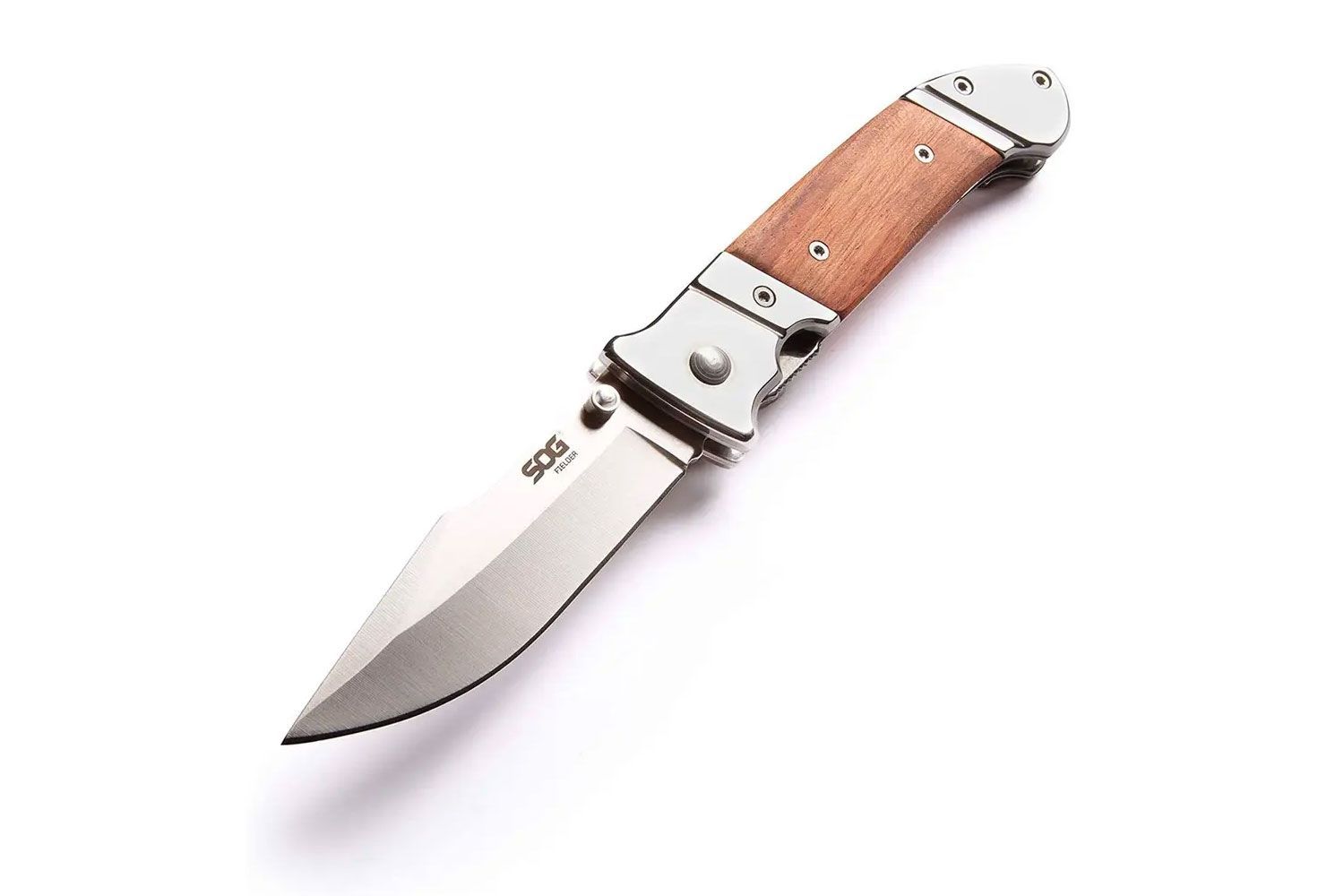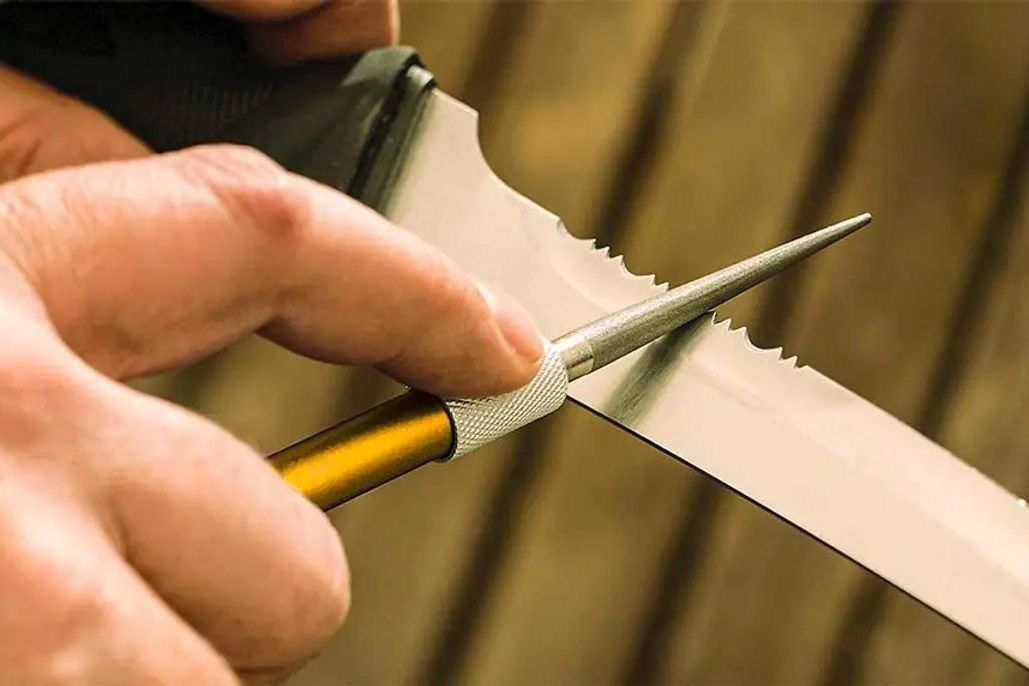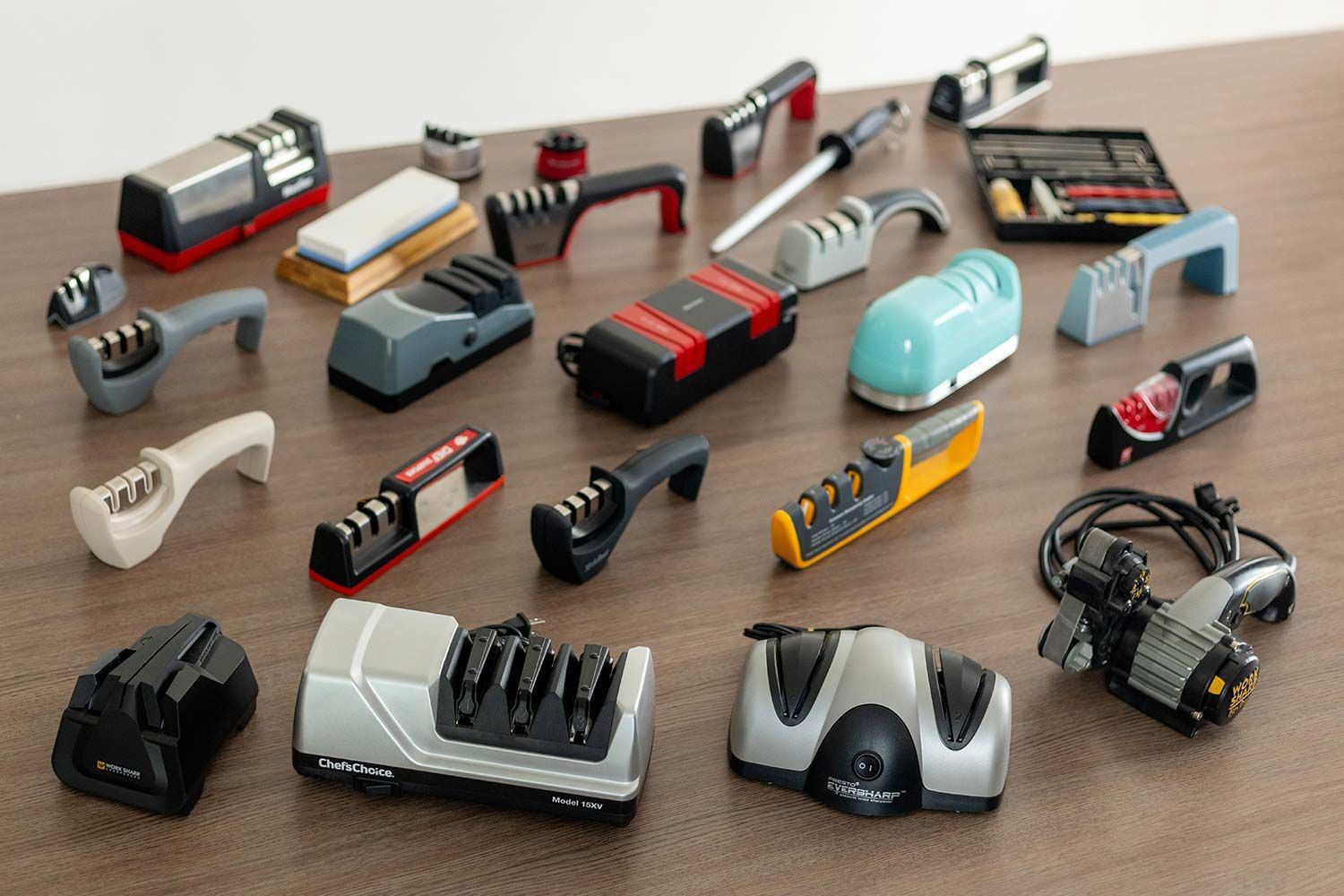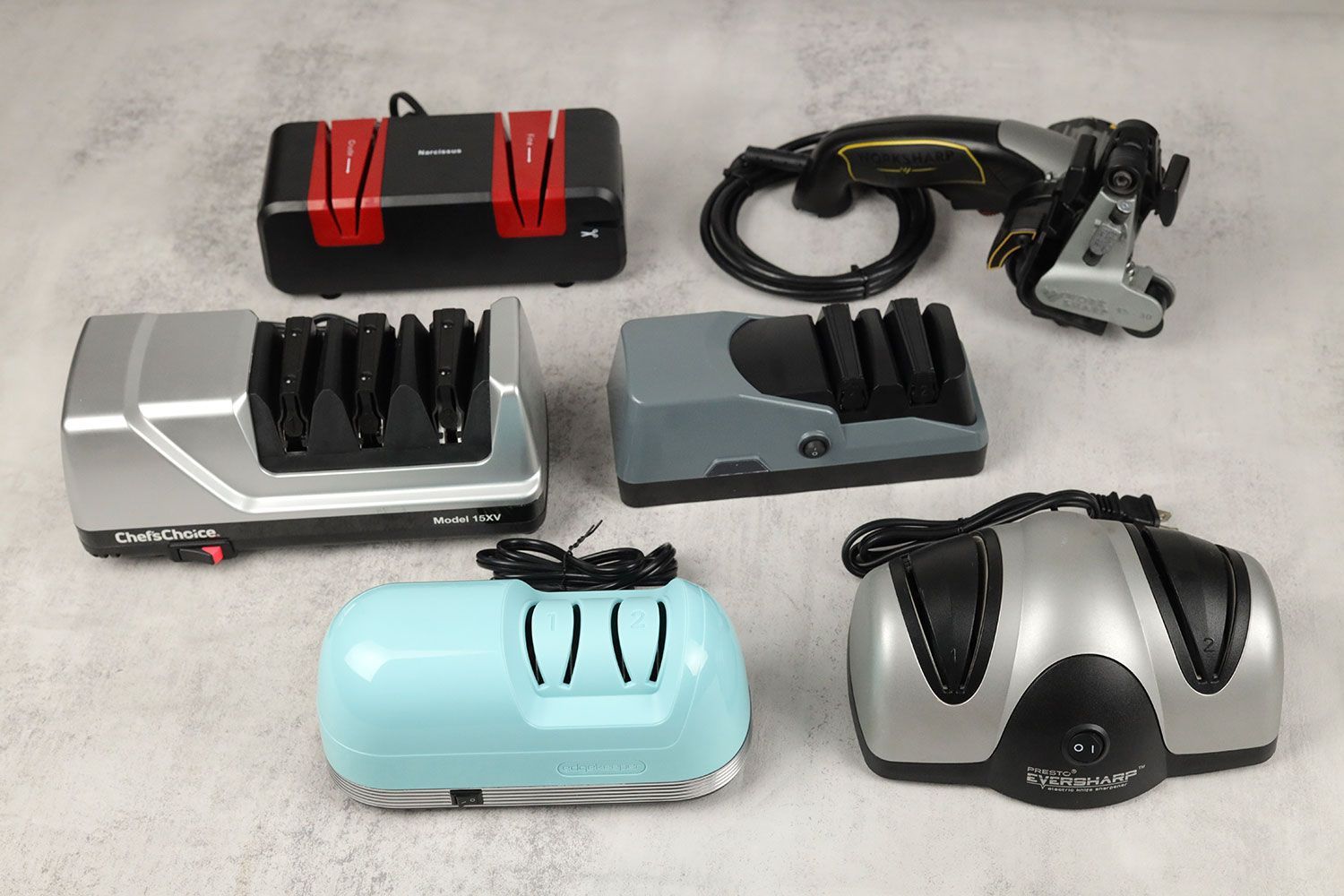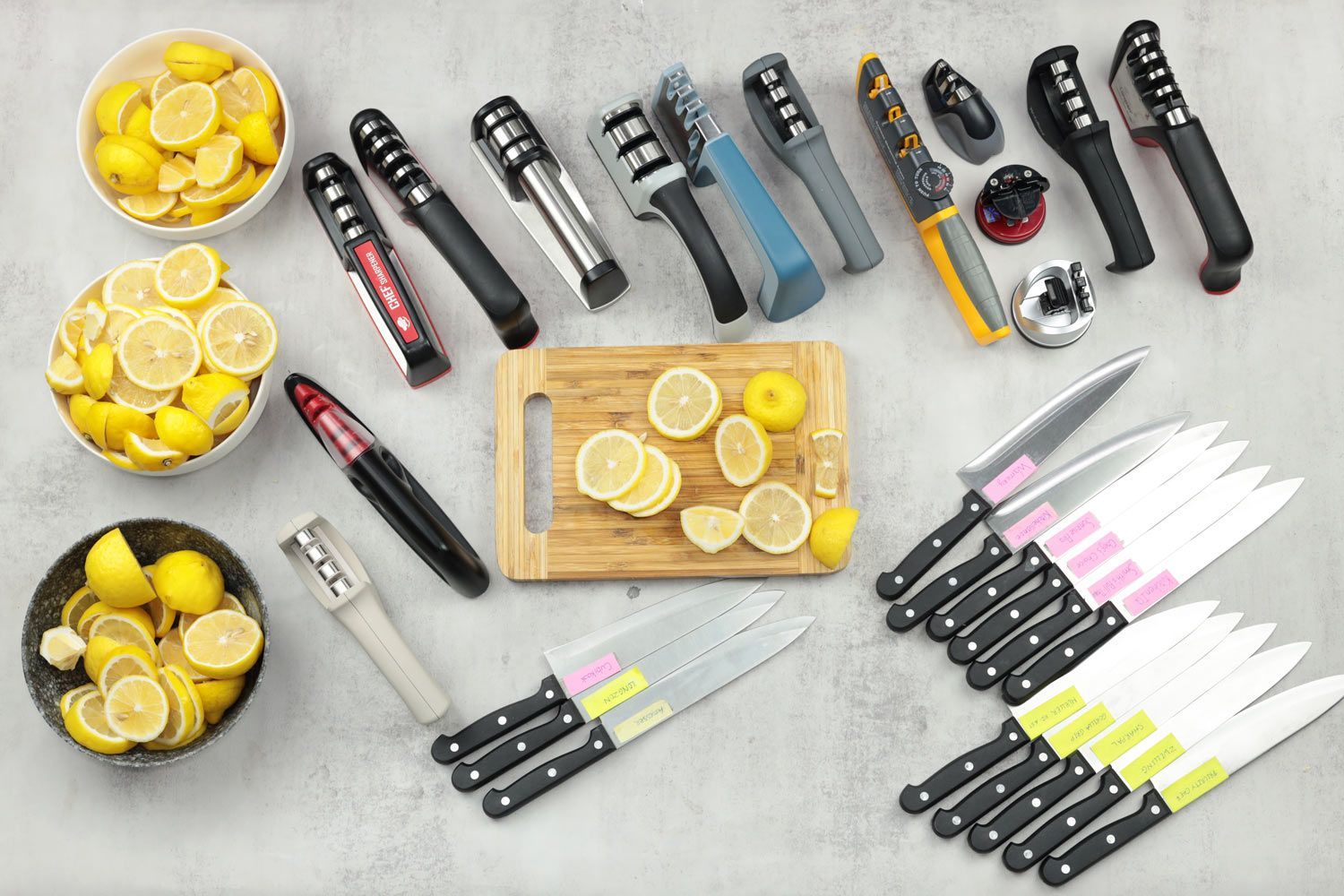Our recommendations are made independently. We may receive commissions from purchases made via our links.
How to Sharpen a Knife with a Rod
Knowing how to sharpen a knife with a rod will help keep your blades keener for longer between rejuvenations.
With so many types of knife sharpeners on the market today, it can be hard to decide which is best for you. Today we’ll examine rod-shaped sharpening and honing tools and explain how to sharpen a knife with a rod.
These tools get called by various names (such as honing steel, honing rod, or sharpening steel), but their operating principle is the same. You run your blade along the rod at the proper angle to bring it back to the desired sharpness.
Is Honing a Knife the Same as Sharpening?
In common parlance, the terms “honing” and “sharpening” are often used interchangeably. This is not technically correct, however.
When a knife gets used, the thinnest portion of the edge can develop divots and can also “fold” to the side a bit. Sharpening and honing address these problems.
Honing (sometimes called straightening) is the process of straightening out the folded edge. This usually doesn’t take too much effort, but it does require a hard honing material like hardened steel or ceramic.
Sharpening, on the other hand, involves removing metal from the knife’s edge, and requires an abrasive. This will bring dull edges back to full sharpness and help even out microscopic divots. Sharpening doesn’t need to be done as often as honing.
Rod-shaped tools are often labeled incorrectly in this regard. Most “sharpening steel” rods are actually honing tools. They’re made of harder steel (i.e. less prone to bending or warping) than the surface of your knife. They’ll reshape the knife’s edge without deforming themselves.
Some other rods include an abrasive such as diamond dust. The abrasive grinds away a bit of the knife’s metal. As long as it is done at a consistent angle, this will create a sharper edge.
How to Sharpen a Knife with a Rod
The idea behind rod-shaped honing or sharpening tools is simple. Run the blade along the surface of the rod at the correct angle and you’ll get the intended effect.
You see this all the time on professional cooking shows; the chef slaps his/her knife along the rod at lightning speed and then proceeds to dice a dozen tomatoes at a similar pace, all while berating their fellow cooks as lethargic. Most of us, however, don’t have the practice to be able to do it like that.
A simpler and safer method of honing your knife with a rod is what’s called the vertical stroke method. Here’s how to do it:
- Hold the rod tip down firmly against a wood cutting board or another non-slippery countertop surface. You want to hold it far enough from your body that a slip won’t endanger you, but not so far that it’s hard to control.
- Place the heel of your knife blade against the upper part of the rod with the blade edge downward. The knife’s tip should angle slightly upward.
- Angle the flat of the knife outward to create about a 15-degree angle between the knife and the rod. This angle may be different depending on the specific knife’s bevel angle.
- Slide the knife downward while also pulling it toward you. You want to reach the tip of the knife before you hit the rod’s end. Keep the same 15-degree angle the whole way down.
- Repeat this motion 4-5 times.
- Switch to the other side of the blade and repeat. (Note: If your knife is only beveled on one side, you should only sharpen that side.)
- Rinse off the knife before use.
If you’re using a honing rod (ceramic or steel), this should be done very regularly— think every few days at least. It will extend the life of your knife and make your slicing easier. With actual sharpening rods, however, you’ll probably only need to do this a couple times a year.
Types of Honing Rods
As mentioned above, rods are available in different materials. All can be employed using the same motion, but they differ slightly in purpose.
Knife Sharpening Steel Rod
Steel rods are probably the most common of these types of tools, and certainly the most durable. They’re often included in knife sets and arealmostalways of the smooth-surfaced honing variety.
Steel honing rods are made from harder steel than most knives so that they can straighten the edge without warping themselves. Eventually, the rod may lose a bit of material from its surface, but that should take a long time.
Note: After you wash your honing steel, make sure to dry it thoroughly with a towel before putting it in the knife block or drawer. Nobody wants rust spots!
Ceramic Sharpening Rod
Ceramic rods offer a bit more diversity than others. Ceramic material itself is very hard. In engineering terms, that means it resists bending, but is also brittle.
The bending resistance is good, of course, because it means your rod will maintain its straight surface for a long time. Unfortunately, its brittle nature means that if you drop the rod, it’s liable to break, rendering it useless.
Ceramic material itself can be slightly abrasive. Most ceramic rods are intended to primarily do a honing job, but they’ll wear very minor amounts of metal from your blade. Don’t fret much; you can still use it for honing purposes unless it’s specifically marketed for its abrasive properties. After use, be sure to rinse off any metal filings so they don’t become abrasives themselves.
Ceramic rods may wear down over time if used heavily. Fortunately, they’re often among the cheaper options.
Diamond Rod Knife Sharpener
Diamond-dust-impregnated sharpening rods are different than most of their counterparts. These are unequivocally sharpening tools rather than honing tools. As such, they shouldn’t be used more than a few times a year.
Sharpening properly requires a bit more precision than honing. If you’re not sure you can keep the right angle, other methods like pull-through sharpeners may serve you better. If you’re practiced at it, though, a rod sharpener like this can be a quick way to get the job done.

